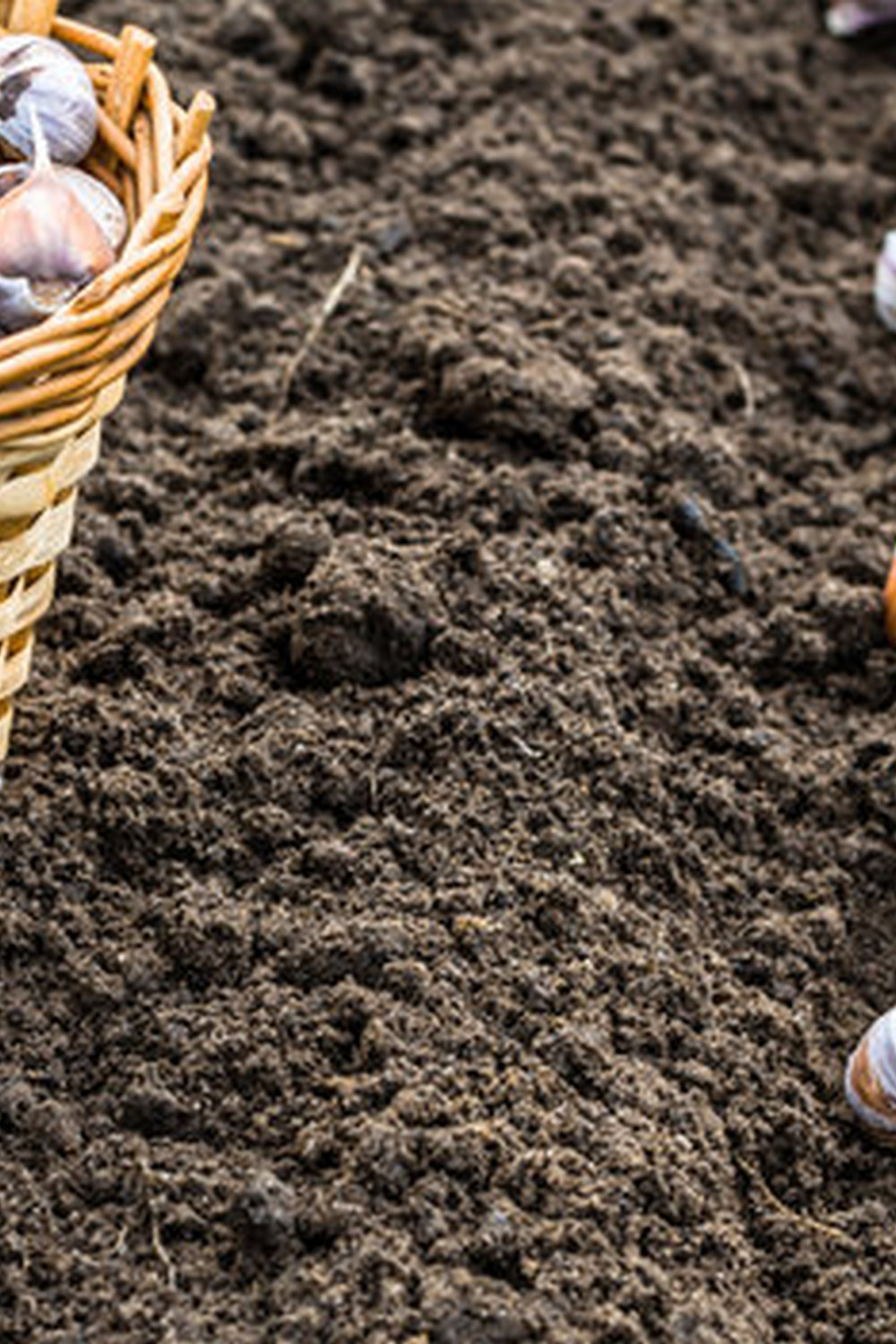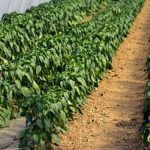Walnut trees are known for their beautiful appearance and delicious nuts, but did you know they can also have an impact on nearby vegetable gardens? In this article, we will explore the question: can walnut trees affect vegetable gardens? From allelopathy to nutrient competition, we will delve into the ways in which walnut trees can potentially hinder the growth of vegetables.
Walnut trees possess unique characteristics that can pose challenges for vegetable gardens. One of the key reasons for this is allelopathy, a phenomenon where walnut trees release chemicals that inhibit the growth of surrounding plants. These chemicals can create a hostile environment for vegetables, making it difficult for them to thrive. Understanding how walnut trees interact with other plants is essential for gardeners looking to cultivate healthy produce.
While walnut trees may present obstacles for vegetable gardens, there are strategies that can help mitigate their effects. By choosing compatible vegetables that can coexist with walnut trees, gardeners can ensure a successful harvest. Additionally, implementing protective measures and being vigilant about signs of walnut tree influence can help maintain a thriving vegetable garden in spite of the challenges posed by these majestic trees.
Background on Walnut Trees
Walnut trees, specifically black walnut trees, produce a substance known as juglone in their roots, leaves, and nut hulls. This chemical is allelopathic, meaning it has the ability to inhibit the growth of certain plants around it. Juglone can be particularly detrimental to vegetable gardens as it can interfere with nutrient uptake in plants like tomatoes, peppers, potatoes, and other common vegetables. This can result in stunted growth, yellowing leaves, and overall poor performance of the crops.
In addition to the allelopathic effects of juglone, walnut trees have extensive root systems that compete with nearby plants for water and nutrients present in the soil. This competition further stresses vegetable plants and can lead to decreased yields or even crop failure. Furthermore, walnut trees are known to create dense shade that limits sunlight exposure for vegetables growing underneath them, affecting their photosynthesis process negatively.
| Vegetable | Tolerance Level |
|---|---|
| Beans (Bush and Pole) | High tolerance |
| Carrots | High tolerance |
| Cucumbers | Moderate tolerance |
Allelopathy and Walnut Trees
Allelopathy is a phenomenon in which certain plants release chemicals into the soil that inhibit the growth of other nearby plants. Walnut trees are known for their allelopathic effects, specifically Juglone, a chemical compound found in their leaves, roots, and nut hulls. This substance can be toxic to many plants, including vegetables commonly grown in gardens.
Impact of Juglone on Vegetable Gardens
When Juglone is released into the soil by walnut trees, it can affect the growth and development of vegetable plants in various ways. Some vegetables may exhibit stunted growth, yellowing of leaves, wilting, or even death when exposed to high levels of Juglone. Additionally, certain crops may have reduced yields or produce poor-quality fruits and vegetables due to the allelopathic effects of walnut trees.
Managing Allelopathic Effects
To mitigate the negative impact of walnut trees on vegetable gardens, gardeners can take several proactive measures. One approach is to plant vegetables at a sufficient distance from walnut trees to minimize exposure to Juglone. Raised beds with fresh soil and compost can also help dilute any allelopathic compounds present in the ground. Furthermore, adding organic matter such as activated charcoal or biochar can aid in neutralizing Juglone’s effects and creating a more hospitable environment for vegetable growth.
Choosing Compatible Vegetables
When dealing with the presence of walnut trees near your vegetable garden, it is important to consider the compatibility of certain vegetables with these trees. Walnut trees release juglone, a chemical compound that can be detrimental to the growth and development of many plant species. However, there are some vegetables that can thrive in close proximity to walnut trees without being negatively affected. Below is a list of vegetables that can flourish near walnut trees:
- Tomatoes: Despite being more sensitive to juglone than other plants, tomatoes are surprisingly resilient and can still do well near walnut trees.
- Beans: Both pole beans and bush beans are known for their ability to tolerate juglone and can be a good option for planting near walnut trees.
- Onions: Onions are generally unaffected by juglone and can coexist peacefully with walnut trees in your garden.
- Spinach: This leafy green is also not affected by the chemicals released by walnut trees and can thrive alongside them.
It is essential to choose vegetables carefully when planning your garden layout in order to avoid any negative effects from nearby walnut trees. By selecting plants that are compatible with these trees, you can ensure a successful harvest despite the challenges they may present. Additionally, implementing proper care practices and ensuring adequate soil health will help mitigate any potential issues caused by the presence of walnut trees.
In addition to the mentioned vegetables, other options such as cucumbers, carrots, radishes, and lettuce can also be suitable choices for planting near walnut trees. By diversifying your vegetable selection and considering their compatibility with juglone-containing plants like walnuts, you can create a thriving garden environment, even in the presence of these potentially challenging trees. Remember to monitor your plants closely for any signs of stress or nutrient deficiencies and adjust your gardening techniques accordingly for optimal results.
Tips for Protecting Vegetable Gardens
Plant Protective Barrier Plants
One effective way to protect vegetable gardens from the allelopathic effects of walnut trees is by planting protective barrier plants. These plants can help absorb or neutralize the harmful chemicals released by the walnut trees, creating a buffer zone for your vegetables. Consider planting species like sunflowers, marigolds, or rhubarb around the perimeter of your garden to shield your vegetables from the impact of walnut trees.
Implement Raised Beds
Another strategy to minimize the effects of walnut trees on vegetable gardens is to opt for raised beds. By elevating your vegetable garden above ground level, you can create a physical barrier that reduces direct contact with the allelopathic substances present in the soil due to walnut trees. Raised beds allow you to control the quality of soil and provide a more favorable growing environment for your vegetables.
Amend Soil Regularly
Given that walnut trees can compete with vegetables for nutrients in the soil, it is essential to regularly amend the soil in your vegetable garden. Adding organic matter such as compost or aged manure can improve soil fertility and help replenish nutrients that may be depleted by nearby walnut trees. By ensuring that your vegetables receive adequate nourishment, you can enhance their resilience against the detrimental influence of walnut trees.
By implementing these practical tips for protecting vegetable gardens from the effects of walnut trees, you
With thoughtful planning and care, you can successfully mitigate the impact of walnut trees on your vegetable garden and enjoy bountiful harvests throughout the growing season.
Nutrient Competition
When considering the impact of walnut trees on vegetable gardens, one crucial factor to explore is nutrient competition. Walnut trees produce juglone, a toxic substance that can leach into the soil and hinder the growth of nearby plants, including vegetables.
The presence of juglone can lead to a phenomenon known as allelopathy, where walnut trees essentially outcompete other vegetation for essential nutrients in the soil. This can result in stunted growth and poor yield for vegetables grown in close proximity to walnut trees.
To better understand how nutrient competition between walnut trees and vegetable gardens unfolds, it’s essential to recognize the specific nutrients that may be affected. Juglone released by walnut trees can significantly reduce the availability of nitrogen, phosphorus, and potassium in the soil.
These nutrients are vital for healthy plant growth, and competition from walnut trees can lead to deficiencies that impact the overall health and productivity of vegetables. Gardeners must take proactive measures to address this issue and ensure that their vegetable plants have access to sufficient nutrients despite the presence of juglone-producing walnut trees.
One effective approach to mitigate nutrient competition from walnut trees involves implementing strategic planting techniques. For instance, establishing raised beds filled with fresh compost or nutrient-rich soil can create a barrier between vegetable roots and contaminated soil affected by juglone.
Additionally, selecting vegetables that are less sensitive to juglone toxicity can help minimize nutrient competition and promote healthier growth in a garden environment where walnut trees loom nearby. By understanding the dynamics of nutrient competition between walnut trees and vegetables, gardeners can implement targeted solutions to safeguard their crops and optimize harvest yields.
| Nutrients Affected | Effects on Vegetables |
|---|---|
| Nitrogen | Stunts growth and reduces overall vigor |
| Phosphorus | Impacts root development and flowering |
| Potassium | Reduces disease resistance and fruit quality |
Signs of Walnut Tree Influence
Walnut trees are known to produce juglone, a chemical compound that can be detrimental to the growth of many plants, including vegetables. Here are some signs that can indicate walnut trees are negatively impacting vegetable gardens:
- Stunted growth: If your vegetable plants are failing to grow as expected, it could be a sign of juglone toxicity from nearby walnut trees.
- Yellowing leaves: Discoloration or yellowing of leaves on your vegetable plants can also be a result of the allelopathic effects of walnut trees.
- Wilting plants: If you notice your vegetable plants wilting even with sufficient watering, it may be due to the presence of juglone in the soil.
It is essential to keep an eye out for these symptoms and take appropriate actions to mitigate the impact of walnut trees on your vegetable garden. By understanding these signs, gardeners can address the issues promptly and help their vegetables thrive despite the presence of walnut trees.
To combat the negative effects of walnut trees on vegetable gardens, one can consider implementing various strategies such as:
- Planting raised beds: Creating raised beds with fresh soil can help prevent direct contact between your vegetables and contaminated soil near walnut trees.
- Choosing juglone-resistant plants: Some vegetables like tomatoes, onions, carrots, and beans are more tolerant to juglone and can withstand its effects better than others.
- Regular soil testing: Testing the soil in your garden periodically can help you monitor nutrient levels and any potential buildup of juglone from walnut tree roots.
By being vigilant about these signs and implementing proactive measures, gardeners can ensure their vegetable gardens remain healthy and productive despite the presence of walnut trees in the vicinity.
Conclusion
In conclusion, it is evident that walnut trees can indeed have a significant impact on the health and growth of vegetable gardens. The allelopathic properties of walnut trees, which release chemicals that inhibit the growth of other plants, pose a challenge for gardeners looking to cultivate vegetables in close proximity to these trees. However, by being aware of the potential issues and taking proactive measures, gardeners
One key strategy is to carefully select compatible vegetables that can coexist with walnut trees without being adversely affected by their presence. Choosing plants that are less susceptible to the allelopathic effects of walnut trees can ensure a more successful harvest. Additionally, implementing practices such as incorporating organic matter into the soil, regularly monitoring nutrient levels, and providing adequate water can help buffer against the competition for nutrients posed by walnut trees.
While signs of walnut tree influence on vegetable gardens may manifest in stunted growth, yellowing leaves, or overall poor plant health, gardeners should not be discouraged. By following the tips outlined in this article and staying vigilant for symptoms of stress in their vegetables, gardeners
Frequently Asked Questions
How Far Should a Garden Be From a Walnut Tree?
A garden should ideally be located at least 50 feet away from a walnut tree to avoid potential issues with juglone, a compound toxic to many plants that is released by walnut trees.
What Vegetables Will Grow Under a Walnut Tree?
Vegetables that can typically grow under a walnut tree include shade-tolerant varieties such as lettuce, spinach, kale, and other leafy greens. These plants are less sensitive to juglone.
How Far Should Tomatoes Be From Walnut Trees?
Tomatoes should be planted at least 50 feet away from walnut trees due to their sensitivity to juglone. Being in close proximity can lead to stunted growth, wilting, and overall poor fruit production in tomatoes.

If you’re looking to get into vegetable gardening, or are just looking for some tips on how to make your current garden better, then you’ve come to the right place! My name is Ethel and I have been gardening for years. In this blog, I’m going to share with you some of my best tips on how to create a successful vegetable garden.





